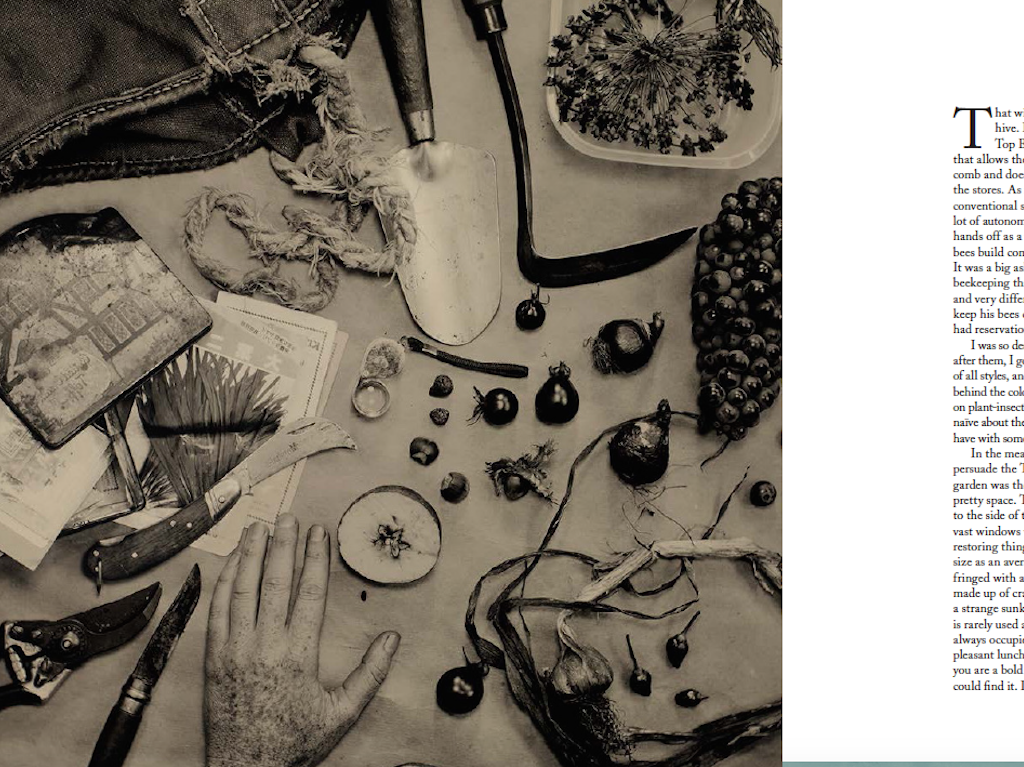
An Extract from Steve and Alys's New Book: Letters to a Beekeeper
'That winter, I started to plan my hive. I desperately wanted to try a Top Bar Hive, a horizontal hive that allows the bees to build their own comb and doesn’t exclude the queen from the stores. As far as hives go, it is not a conventional set-up. It allows the bees a lot of autonomy, but it’s perhaps not as hands off as a warren hive, where the bees build comb exactly as they please. It was a big ask really because it’s a style of beekeeping that’s very experimental still and very different from how Steve has to keep his bees commercially. Still, if Steve had reservations, he kept them quiet.
I was so desperate to learn how to look after them, I gorged on books on beekeeping of all styles, and I delved into the science behind the colony and read endless books on plant-insect interactions. I was so utterly naïve about the kind of relationship you have with something so wild.
In the meantime, Steve and I had to persuade the Tate Britain that their staff garden was the perfect spot for a wild but pretty space. The garden is tucked away to the side of the Tate and overlooked by vast windows where people beaver away restoring things. It isn’t large: the same size as an average back garden. It is fringed with a thick yew hedge and made up of crab apples and a lawn with a strange sunken middle with seating that is rarely used and park benches that are always occupied. It is largely used as a pleasant lunch spot by Tate staff, but if you are a bold member of the public you could find it. It’s not out of reach, but it does have that lovely feeling of being behind the scenes. It has a few practical elements: a bike rack, a bin or two, three large pots and giant rotting tree trunk.
When I first visited, the soil was thin, poor and dry and the weeds the sort that might be able to tackle such a space. It is not an easy space to garden because the crab apples shade out the beds and between them and the yew hedge, the soil is robbed of moisture and nutrients. It was not an ideal spot, but that was part of its appeal. So many of us have a shady corner with thin soil that is hard to please. Plus I loved the idea of jollying up the staff ’s lunchtime spot. I love Tate Britain: I love the landscapes indoors and I was excited about giving its outdoor space something worth looking at too. By this point I had consumed an awful lot of Steve’s honey so it seemed fitting that I should thank some of his bees. Above all, I wanted to give this little urban oasis something that might please any wildlife that passed through whether that was a pigeon, a bumble bee or a beetle.
If you want to build a garden for pollinators to feast on, it’s worth taking time to understand how plants became the go-to supermarket for insects. It’s a fascinating tale and it’s also one that will help you become a better gardener and beekeeper.
Think of things that you love to eat, that you crave. They always fulfill that holy grail of protein and sugar, fat and carbs: buttered toast, cake, burgers, donuts, ice cream... '
